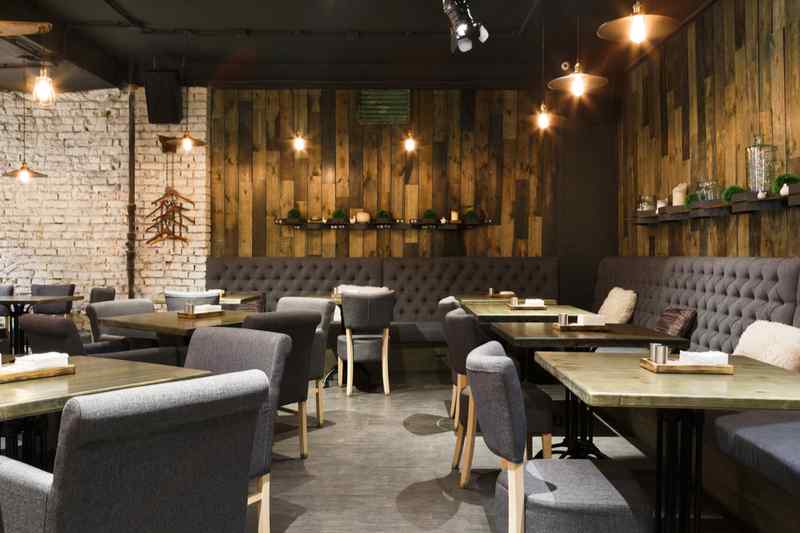Food Quality vs. Service: What’s More Important for Restaurants
Whether it’s a romantic candlelit dinner at an upscale restaurant or comfort food at your local greasy spoon, there’s nothing like a sit-down meal with good company. For many people, going out to eat is a special treat. Such was the case for me growing up.
Every Sunday, my parents would take the family out to eat for brunch. We’d have a quick vote for where to go, but it was never too divisive. No matter how long we spent trying to brainstorm appealing spots, we’d end up at the same place: a Mexican restaurant around the corner from our house. We went there because we knew what to expect: a lively atmosphere, the freshest house-made chips and salsa, and friendly servers.

After years of frequenting this restaurant, we noticed the service slip. The restaurant was noisy, stuffed to the point we could hear other tables’ conversations better than our own. What’s worse, it was constantly understaffed, took forever to get an order in, and more often than not, the food was delivered cold. One time, after waiting nearly 20 minutes to have our drink order taken, we vowed never to return. And just like that, a longstanding favorite became an unpleasant experience to avoid.
Then, there’s the all-too-common tragedy when new management takes over and changes the menu, ingredients, or otherwise lowers the food to only a fraction of the quality it once was. When the new owners don’t care about their food as much as the previous owners, it shows.
Both scenarios are an unfortunate reality that a lot of restaurants must contend with. A dip in either food quality or service can be a downward spiral for business. A combination of both can be deadly.
But which is more important — quality or service? That is a question that cannot be answered simply. Many factors need to be considered. What is more important depends on the specifics of your restaurants, such as location, menu, and clientele.
We must also consider the limitations of the current situation. COVID-19 has profoundly impacted the restaurant industry, from wonky hours of operation to breaks in the supply chain to limited seating and menus. In terms of service, restaurants have traded in a positive in-house experience for ease of delivery and proximity to customers. That means that most restaurants are relying on the quality of their food alone right now. After the pandemic, quality service might arguably be more critical as restaurant-goers seek out the experience of dining out they so desperately missed during the lockdown.
Food Quality in Restaurants
In a recent Mastercard poll, 58% of respondents said they prioritized food quality over service. This means that to the consumer, the importance of food quality vs. service is a near-even split, leaning towards food quality. What matters to that 58% percent of respondents is the appearance, presentation, texture, and flavor of the food they’re eating. It’s how the customer feels when they take that first bite and immediately want to go in for more.
Why It’s Important
Food quality is important because it is the primary good you’re selling. Sure, there’s the experience of eating out, but why visit a restaurant and spend money on a meal you could easily prepare at home (and perhaps an even more delicious version)? Especially right now, when the only real way customers can judge a restaurant is on food quality alone, serving bad food is the easiest way to go out of business.
Customers can taste the difference between quality and cheap ingredients. What’s more, they will remember how they feel after eating a meal. Did they leave feeling pleasantly full and energized, or did they leave feeling overly full and sluggish? No doubt customers will remember a case of food poisoning or other adverse reactions they picked up at your restaurant, which is another reason why it’s essential to choose quality ingredients; you don’t want your customers getting sick.
Quality ingredients may be pricier, but what you spend on fresh ingredients, you save in food waste. That means fewer ingredients are thrown away, which is better for both the environment and your bottom line.
At a Glance
● Primary selling point
● Customer health
● Reduce food waste
How to Improve Food Quality
You don’t need ample, beautiful space to make quality food. All it takes is fresh ingredients, a carefully curated menu, and dietary accommodations.
● Source better ingredients. It all starts with your ingredients. Even the most skilled chef in the world can’t make a good meal with poor quality ingredients. Look for fresh, local ingredients, and consider how you can incorporate seasonal ingredients into your menu. Eliminate artificial ingredients, frozen food, and preservatives. Overall, improving your ingredients is the most straightforward way to improve the quality of your food. As a bonus, you can use quality ingredients as a unique selling point and marketing tool. For example, if there’s a popular local dairy, consider publicizing that you serve their products.
● Revamp your menu. Food quality goes hand in hand with menu quality. Do you have an outdated menu that has incorrect pricing? Or maybe it’s overwhelmingly large and hard to navigate. Scaling back or expanding your menu as needed is one of the most effective ways to improve customer satisfaction with your food and will actually make your food better. Narrowing your focus to what you do best, whether it’s the basics or a few “experimental” dishes, will serve you (and your customers) much better. Why have dishes on the menu that are unpopular and low-rated? Likewise, if your customers have grown tired of a dull and limited menu, consider throwing some fun new dishes into rotation.
● Accommodate different diets. Nowadays, consumers are becoming much more health-conscious. When dining out, they’ve come to expect that restaurants offer healthy options. It’s okay if your restaurant doesn’t specialize in healthy foods (and, let’s face it, sometimes that’s not what we’re craving when going out, anyway). As long as you offer a couple of lighter dishes as an option, your bases are covered. Be sure to include some vegan and vegetarian options as well, especially if your restaurant is located in an area where these diets are common. Additionally, it’s a good idea to have items on your menu that cater to customers with dietary restrictions. Common allergies include shellfish, tree nuts and peanuts, and gluten.
Service Quality in the Restaurant

Of course, food isn’t the only thing you’re selling at a restaurant. When customers dine out, they want a memorable experience. For those who frequent Yelp, it should come as no surprise that 80% of complaints on the site relate to poor service. We’ve all seen reviews that praise food to the highest degree, and yet, all it took was an unfortunate service incident to knock the entire review down to one or two stars.
Why It’s Important
Customers at sit-down restaurants are paying for more than just a tasty meal. They want drink service, lively conversation, sometimes just an excuse to dress up. With the exception of drive-thrus and take-out only joints, dining out is often a highly social activity. According to Amazon’s market research, 78% of millennials are willing to pay more for a memorable dining experience. That’s a rather profitable market to tap into.
Even at fast-food restaurants, service is important. Nothing is worse than sitting in the drive-thru for what seems like hours on a hot day when you have somewhere to be. In this situation, it’s important to comply with customer expectations that fast-food restaurants be just that — fast.
The financial importance of quality customer service cannot be underestimated. Sometimes all it takes is one negative experience to lose a customer. Customer reviews carry a lot of weight for other customers, and a particularly horrid review can be enough to steer potential customers away.
At a Glance
● Customers will pay more for better service.
● Most restaurant complaints relate to bad service.
● Negative reviews drive customers away.
How to Improve Service Quality
Consumer Reports surveyed 1,000 people about their most significant issues with dining out. Here are the most common service complaints, broken down.
● 76%: Dirty utensils or table
● 72%: Rude servers
● 66%: Meals that are too hot or too cold
● 62%: Wrong orders
● 61%: Feeling rushed to leave by server
In addition to remedying the above and brushing up on general etiquette, there are several other things you can do to make your customers feel pampered and special.
● Provide complimentary hors d’oeuvres. Not much is more inviting than free food. Consider welcoming your guests in with a complimentary basket of bread and butter or chips and salsa. This is a perfect idea if wait times tend to run long, in which case unlimited hors d'oeuvres will keep customers satisfied and patient.
● Accommodate customers’ requests. The first rule of business is that the customer is always right. While some customers may ask for unreasonable favors, you should do your utmost to provide accommodations when possible. For example, if a customer asks to make a substitution, add or hold an item from their meal, sit at a particular place, etc., your servers should do their best to make it happen, when possible.
● Create ambiance. For this, it’s essential to understand why your customers come to your restaurant. As yourself: what niche do you fill (e.g., Sunday brunch, date night spot, sports bar, etc.)? What can you offer in ambiance to make the best experience for your customers? These are the questions that will help you create an atmosphere that is inviting and draws customers. For example, if you own a coffee shop, your customers are likely looking for a quiet place to relax and enjoy a quick bite. They might bring a book or their laptop. Your environment should be amenable to this end, with low volume instrumental music, cozy corners, and free Wi-Fi. At the same time, other customers will meet for coffee dates and want a space where they can chat comfortably. The goal here would be to balance these two demographics so that neither is a disturbance to the other. You can create ambiance with music, lights, decor, and furniture arrangements. This is your chance to get creative and really make the place your own.
Most Common Restaurant Quality Issues (and Solutions!)

There’s no shortage of issues restaurateurs run up against; it’s no doubt a tough business to be in. Here are just a few of the most common issues that affect restaurant quality:
- Employee turnover
- Customer service and managing complaints
- Food security
Below we’ll discuss why these issues happen in the first place and what you can do to remedy them.
Issue #1: Employee Turnover
Working in a restaurant is not for everyone. With the exception of upper management or those in a family business, restaurant staff is often not a permanent fixture in the operation. Working a restaurant job is well-suited for students and others looking for interim employment. For this reason, restaurants have an exceptionally high turnover rate. The average tenure of a food service worker is just under two months. You probably won’t have a hard time filling an open position. The real problem with this model is that you’ll lose hours upon hours spent training new employees.
One way to address this is to streamline your training process with turnover rate in mind. It never hurts to be upfront with applicants during the interview process about how long they plan to stay at a job. Whatever their answer, prepare for the possibility they will not stay long. By streamlining your training, hosting regular orientation sessions periodically, and training multiple employees at once, you’ll cut down on wasted hours.
Job satisfaction and how long one stays on board have everything to do with a workplace’s culture. One of the biggest ways to reduce employee turnover is to create a work environment that is fair, safe, and enjoyable for employees. Give your employees adequate training, reward their hard work, and inform them of opportunities for advancement. Doing so will increase motivation and incentive for them to stay at your company.
Issue #2: Customer Service and Managing Complaints
Even if you’re doing everything right, you’re bound to run up against some complaints from disgruntled customers. It could be anything as minor as a server forgetting a straw to a customer’s allergic reaction to an out-of-place peanut. Whatever it is, be prepared to have a system in place for handling it. Customer service is one of the most important departments of any consumer-facing business, especially those in any service industry. The problem is that restaurateurs and waitstaff often function as their own customer service department. If you and your team possess soft skills like communication, remaining professional under duress, and having an amiable personality, it may not be a huge issue. Either way, you and your employees should be well-trained in handling complaints both in real-time and after the fact. It’s best practice to follow up with customers and use their feedback to make long-term, tangible improvements.
Issue #3: Food Insecurity and Food Waste
This last issue is one that plagued restaurants all over, especially towards the beginning of the pandemic. At the pandemic’s onset, restaurateurs saw their supply chains cut off. Transportation issues caused massive delays in food supply — when restaurants could receive shipments at all. Among other things, this created the possibility of spoiled, rotten food and food shortages.
While pandemic-related food security and food waste can hardly be helped, restaurants can take measures in regular times to prevent these issues as much as possible. Food that is not stored properly can lead to contamination and could make customers and staff ill. What’s more, rotten or contaminated food that must be thrown out contributes to food waste, which is harmful to both the environment and your wallet. Ensure this issue doesn’t happen in the first place by maintaining good communication with your suppliers. In addition, you should regularly inspect your food storage to be sure your ingredients haven’t surpassed their shelf life.
Food vs. Service: Which Matters More
The answer is unclear and highly variable based on a restaurant’s unique situation. Consumers tend to place slightly more weight on food quality, but a string of negative reviews concerning service can damage your business’s reputation as well. Food is the primary good you’re selling, but it isn’t the only good. Sometimes, how food gets to a customer’s table is even more important than the pure merit of the food itself. Right now, restaurants, unfortunately, can’t “sell” their service. Instead, restaurants must rely on delivery drivers, who are out of their control, to do the job for them.
Half of whether service or food is more important depends on your customer’s quality expectations. Are they going to a certain Chicago hot dog stand where employees’ foul mouth is expected and traded for a deliciously greasy morsel? Or are your customers paying upwards of $100 for a fixed menu and, in exchange, expect the best service of their life? In other words, is your food good enough to warrant bad service or vice versa? Of course, a balance of the two is preferable: fresh, exciting meals delivered by a pleasant, diplomatic waitstaff.





